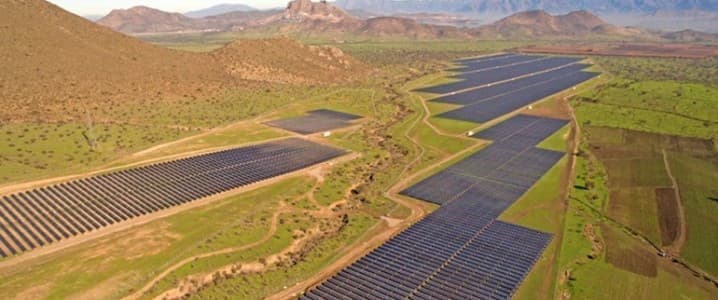Net-Zero transition targets touted so proudly in Europe, the UK, and the U.S. are proving to be a lot more challenging to hit than expected.
Euronews: three of the biggest economies in the EU—Italy, France, and Germany—were falling short of the EU’s targets.
Rhodium Group: The U.S. will fail to reduce its carbon dioxide emissions by 50% from 2005 levels by 2030.
The push to a net-zero emissions future has made governments pledge billions, potentially trillions, in funding for various initiatives, projects, and whole industries. Yet transition targets touted so proudly in Europe, the UK, and the U.S. are proving to be a lot more challenging to hit than expected.
Earlier this month, Euronews reported that three of the biggest economies in the EU—Italy, France, and Germany—were falling short of the EU’s targets and on track to be penalized for that. The warning comes from a climate NGO, Transport & Environment, and shows that Germany was going to miss a 40% emission reduction target for 2030 by a whole 10%. And this is Germany, perhaps the most ambitious of the ambitious EU members when it comes to energy transition efforts.
Meanwhile in the UK, an energy consultancy has also warned that the country is on a path to missing its climate targets. According to Cornwall Insight, the country will be deriving 44% of its electricity from wind and solar by 2030. Yet this is nowhere near what the UK needs to be generating from wind and solar, per Cornwall Insight, in order to meet its net-zero pledge for 2030. That amount, the consultancy says, as quoted by the Financial Times, is 67%.
The latest red transition flag comes from the United States, where reality is falling short of expectations as well. According to an analysis from Rhodium Group, a left-wing consultancy that focuses on energy and environmentalism, the country will fail to reduce its carbon dioxide emissions by 50% from 2005 levels by 2030, which was the stated goal of the Biden administration.
Related: Oil Moves Higher on Crude, Fuel Inventory Draw
Instead, the think tank estimated, emissions will decline by between 32% and 43% by 2030, but then accelerate and possibly reach 55% by 2035, the Financial Times reported. Apparently, this is not good enough because, according to Ben King, associate director of the consultancy’s energy and climate practice, per the FT, “it’s not putting us on a long-term trajectory to decarbonisation.”
There appears to be a divorce between climate targets and reality. In fact, this divorce has been a hallmark of transition efforts, which have seen governments make ever more ambitious pledges regardless of what it is possible to do within the physical constraints of the world we live in. Most climate plans appear to disregard these physical constraints, leading to sub-optimal progress on the goals. What the above analyses show is precisely this: the physical world, the free market, and the energy transition are not really compatible right now.
Take Germany, for instance. The country that has already spent billions on its transition and continues to spend a lot is discovering it cannot keep it up forever. Earlier this month, reports emerged that Berlin planned to change the rules of its subsidy regime and start offering wind and solar developers a bulk grant upfront rather than guaranteed minimum prices for their electricity. Days later, more reports came out saying the German government was going to axe even current guaranteed minimum prices—because of negative electricity prices. The reason for those negative prices? Excessive wind and solar output.
Then there is the UK case, where, per Rhodium Group and most other climate outlets, the buildout of wind and solar needs to accelerate substantially if the country is to meet its net-zero goals. Yet what this stance appears to miss are some facts, such as the availability of raw materials and construction costs—factors unrelated to regulatory regimes that the new Labour government has pledged to change in order to facilitate growth in wind and solar.
Then there is the case with the United States, where the Inflation Reduction Act turned into the biggest transition tool ever crafted by a U.S. government, offering several hundred billion dollars in subsidies to companies willing to do transition work in the country. The IRA indeed attracted a lot of companies—but it couldn’t make what they do more appealing to the end consumer. Local opposition to wind and solar installations is on the rise, EV demand is slowing down, and federal agencies just lost the privilege to devise rules and regulations based on their own interpretation of the law, known as the Chevron deference.
Perhaps the most problematic part of the transition situation right now is that there is little that governments can do to turn things around. They can certainly ease permitting regulations to enable more wind and solar construction—until opposition from local communities begins mounting, and it will because these installations will be encroaching on farmland. They can certainly keep subsidizing EV makers, but only up to a point. Some, such as Germany, have already reached that point, and subsidies are being axed just like guaranteed minimum electricity prices. Subsidizing loss-making enterprises can only last a while, but not forever.
By Irina Slav for Oilprice.com
More Top Reads From Oilprice.com:
U.S. Crude Oil Inventories Continue to FallEuropean Natural Gas Prices Fall as Freeport LNG Resumes OperationsMajor Automakers Returning to Gasoline Cars as EV Demand Slows
>>> Read full article>>>
Copyright for syndicated content belongs to the linked Source : OilPrice – https://oilprice.com/Energy/Energy-General/Net-Zero-Ambitions-Hit-Major-Roadblocks-in-Europe-UK-and-US.html










